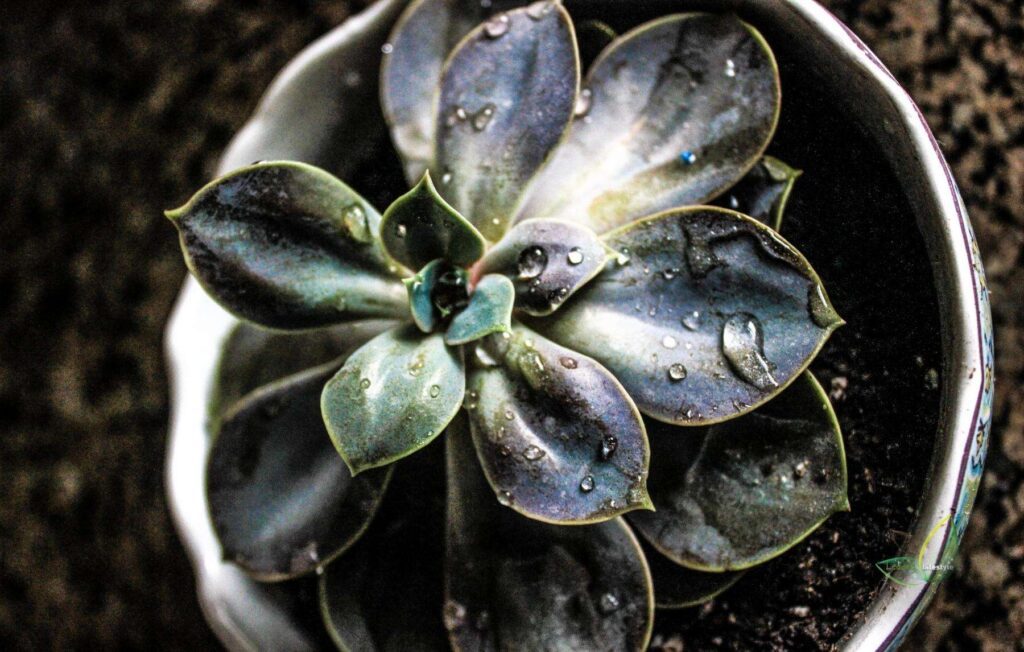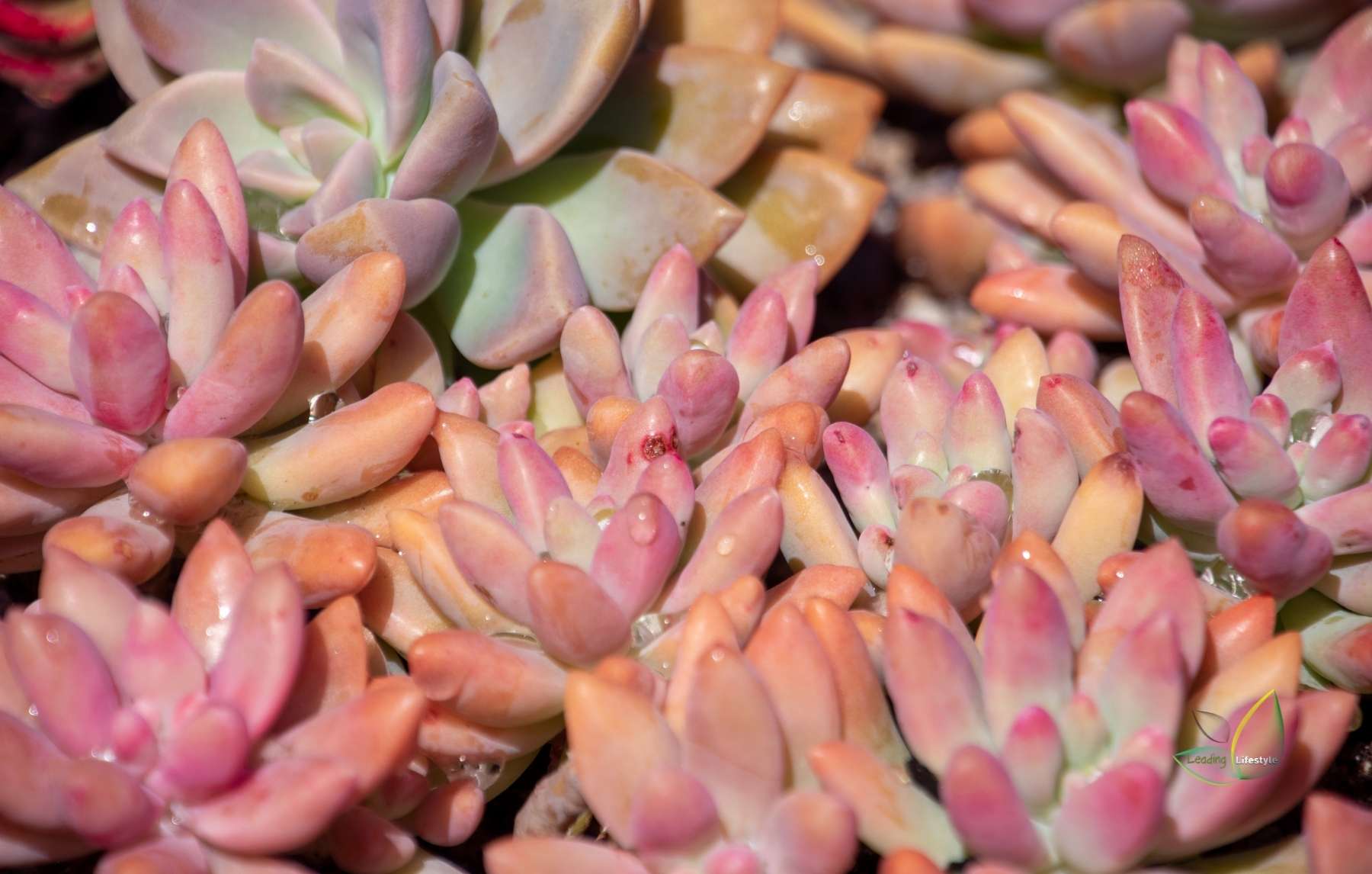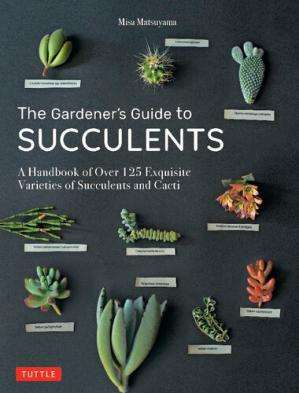Succulents are popular houseplants because they come in various sizes, shapes, styles, and colors.
There are so many succulent plants to choose from that many people will choose ones that fit their specific spaces — whether it’s their desk, plant stand, windowsill, or whatever.
You’ll be able to provide the best care for this unique plant if you learn how to water a succulent properly and how often it needs to be watered.
Do Succulents Need Water?
Succulents do require water to survive. However, how much water do succulents require? Many people believe that succulents only need a small amount of water now and then. While succulent plants are tough and can usually withstand drought, most succulents will not thrive in such conditions.
Succulent plants require regular watering while they are growing. The two main types of succulents are summer growers (winter dormant) and winter growers (summer static).
Summer growers are succulents that grow actively from May to August and then go dormant from November to February.
On the other hand, winter growers are succulents that grow actively from November to February and then go dormant in the summer.
To better understand the watering schedule for succulents, first determine whether your succulent is a summer or winter grower. You can use the list below to determine which category your succulent falls into.
How Often to Water Succulents
As a general rule, succulents should be watered at least once a week during their growing phase. Some people water more frequently. When watering succulents, soak the soil until the water runs out of the drainage holes in the pots.
However, before watering it again, make sure that the soil is arid. This is known as the “soak and dry” method.
Insert a bamboo stick into the soil to ensure that it is scorched. Wait a few minutes before removing the stick. The soil is not completely dry if the stick is damp with soil stuck to it.
The soil is dry if you can easily remove the stick to water your succulents.
However, when your succulents go into dormancy, you should increase the time between waterings.
The consensus is that you give succulents just enough water to keep them from fading.
This is where common sense comes into play.
For example, if you keep your summer growing succulents indoors on a window sill in a heated room during the winter, they will require more water than if you keep them outside.
Succulents are tough, tiny plants that don’t need much water to thrive. A watering can isn’t necessary since they are native to dry climates and store water in their fleshy leaves.
But how frequently should you water this hardy plant?
- Once a week?
- How about twice a week?
- Twice a month?
The most important rule to remember when watering succulents is to water them only when the soil in their growing container is arid. Let the soil dry completely between waterings, we say again. Water only if the soil is crumbly and dry. Most houseplants, after all, prefer to keep their soil moist at all times. Not your typical succulent. If you own the soil moist all the time, the roots will rot. Rotted roots equal a dead succulent.
Seasonal Effects on How Often You Need to Water Succulents
Most succulents increase in the spring and summer, so you’ll need to water them much more frequently during this time.
They extract water from the soil at an incredible rate as they grow new stems, leaves, roots, and blooms. Depending on the light and temperature, you may water them three times per week.
In the winter, succulents go dormant. Because growth has stopped, you will only need to water them once or twice during the season. Overwatering a succulent in the winter is one of the simplest ways to kill it, so avoid using the watering can from November to March.
Allow your succulents to sleep soundly in the aridity.
Summer Growing Succulents
| Adenia | Adenium | Agave | Alluadia | Aloinopsis |
| Brachystelma | Ceropegia | Cissus | Cyphotstemma | Didieria |
| Dorstenia | Echeveria | Euphorbia | Fockea | Huernia |
| Ibervillea | Ipomoea | Jatropha | Lithops | Monadenium |
| Operculicarya | Pachypodium | Pedilanthus | Plumeria | Pseudolithos |
| Pterodiscus | Raphionacme | Sempervivum | Sinningia | Stapelianthus |
| Synadenium | Titanopsis | Trichocaulon | Trichodiadema | Xerosicyos |
Winter Growing Succulents
| Adromischus | Aeonium | Aloe | Anacampseros | Astroloba |
| Avonia | Bowiea | Bulbine | Ceraria | Conophytum |
| Cotyledon | Crassula | Dioscorea | Dudleya | Fouqueria |
| Gasteria | Gibbaeum | Graptopetalum | Graptoveria | Haemanthus |
| Haworthia | Kalanchoe | Neohenricia | Othonna | Pachycormus |
| Pachyphytum | Pachyveria | Pelargonium | Peperomia | Portulacaria |
| Sansevieria | Sarcocaulon | Sedeveria | Sedum | Senecio |
| Stomatium | Sulcorebutia rauschii | Talinum | Tylecodon |
How much water should I give my succulents?
Now that you know what factors influence how frequently you should water succulents, here’s how you do it.
Yes, there is a right and wrong way to do things. Even though succulents are native to the desert, where they don’t get much rain, when it does, it pours. Desert rainstorms are monsoons with sheets of water falling from the sky.
You can simulate desert rain by drenching your succulent when you water it. Pour water on it slowly and continue to do so until the water runs out of the drain hole in the bottom.
Succulents respond better to long, bottomless drinks that soak the soil to the pot’s bottom than regular but timid waterings that only wet the top inch or two of soil in the container.
So, if the soil around your succulents is bone dry, drench it. Allow the soil to dry before re-drenching completely. Allow drying. Drench. Allow drying. Drench. If you stick to that pattern, you’ll have perfectly watered succulents.

How do you know when it's time to water your succulent?
There are two straightforward methods:
- The ability of a succulent to store water in the plant and leaves is a standard feature.
Gently press the leaves between your fingers. The succulent leaves should be rigid (There is still enough water in the leaves). If the leaves are limp and shriveled, the succulent will most likely need to be watered. Of course, if you have any doubts, always go back to step 2.
- Lift the succulent gently out of the pot.
This allows you to see if the soil all around the plant has dried out or is still moist (and therefore darker in color).
When the soil is arid, you add more water; otherwise, the plant will rot.
Two factors must be considered when deciding whether or not to water a succulent: the season and the succulent itself.
Several factors influence succulent growth, including temperature, light, and moisture. The sowing season for succulents occurs during the warmer months. Use the “soak-and-dry” method every two weeks.
On the other hand, Succulents go dormant during the cooler months and require less water. This is the time to keep a close eye on the plant.
To begin, regardless of the season, never water until the soil is arid from top to bottom. You’ll notice that the soil dries out more slowly during the colder months, so wait until it does — even if it takes a month — before watering.
Another sign to look for is the wilting of leaves. This typically indicates that the succulent is dehydrating and requires watering. Again, this may take longer than two weeks during the plant’s dormancy period, so be patient and listen to what the plant is telling you, and you’ll be able to keep succulents alive all year successfully.
Container Dimensions
Larger containers require less watering because the soil retains moisture for a more extended period. Because the soil dries out faster in small, shallow containers, you must water them more frequently.
Quantity of Light
Succulents that get 10 hours or more of direct sunlight will need more water than succulents that get less light. Because they receive more sunlight and are subjected to harsher conditions, outdoor plants require more water than indoor plants.
Humidity
Because moisture is retained for a more extended period in high humidity and cooler temperatures, plants require less frequent watering than hot, dry climates. Are your succulents on a patio in Phoenix getting direct sunlight? Water once a day. Is it a San Francisco deck with some shade? You might only need to water your plants once or twice a week.
Drainage Holes vs. No Drainage Holes
The frequency with which you should water succulents is also determined by whether or not they are planted in containers with drainage holes.
Because succulents dislike sitting in water, containers with drainage holes are highly recommended. Proper drainage allows excess water to drain from the soil, promoting healthy root growth.
How to water succulents without drainage?
If your containers lack drainage holes, you must water more sparingly. Before watering your succulents, use the bamboo stick trick described above to ensure that the soil is arid.
White Succulents Pots with Drainage
Terrarium without Drainage
Indoors vs. Outdoors
The frequency of watering succulents differs depending on whether they are placed indoors or outdoors.
Humidity, temperature, and wind are the most critical factors when watering your plants.
When the temperature is high and the air is windy, the water in the soil dries up faster, necessitating more frequent watering – sometimes as frequently as three times per week.
Indoors, it is dependent on whether your succulents are placed in a well-ventilated area or receive direct sunlight through the windowsill.
If the succulents are in a cool, humid environment, you probably don’t need to water them more than once a week.
- Indoor succulents need less frequent watering.
- Outdoor succulents need more frequent watering.



Big Succulents vs. Small Succulents
When you should water, your succulents are also affected by their size. Succulents with thicker leaves, thicker stems, and larger sizes store more water than succulents with thinner leaves, thinner stems, and smaller sizes.
If you’re looking for a plant that can go longer between waterings, look no further than Pachyphytum oviferum (Moonstone).
Moonstones Pachyphytum
Tokyo Sun Succulẹnt
Proper succulent watering technique
While leaving your succulent in the sink is an option, you can get even better results by learning how to apply some applied techniques properly.
As previously stated, all of the soil in the pot must be thoroughly moistened. That is still true. However, if at all possible, avoid getting water on the leaves. This opens the door to several issues:
Mold and mildew can grow in plant crevices (like where the leaves meet the stem). It also provides a suitable habitat for pests, which prefer moist environments. We recommend using a succulent watering bottle with a bend watering mouth for easy control during the watering process! Mkono’s is a favorite of ours.
- Plants are unable to tink through their leaves. That’s what the roots are for. Any water on a leaf is squandered.
- Plants, even succulents, can get sunburned on occasion. If you leave liquid-like water on the succulent leaves while exposed to direct sunlight, the water may act as a magnifying glass and burn the leaf.
So, if you have enough plants (or enjoy watering), water each succulent separately by pouring water at the base of the stem. Make sure you get the rest of the pot. We highly recommend this planting and watering tool kit if you are new to plants.
Gardening Hand Tools Set
Avoid overwatering
Water is not the only variable to consider when watering. We cannot overstate the importance of soil.
One of the characteristics of soil is its ability to retain water. Soil mixtures containing a lot of organic matter (such as peat moss, coconut coir, and so on) tend to hold a lot of water. Mineral or inorganic matter-dominated mixtures (perlite or sand) do not absorb moisture.
Succulents and cacti require soil that drains quickly.
Pre-Mixed Fast Draining Blend
You want the soil to dry out as soon as possible. Ideally, they should be done on the same day. Watering in the morning is ideal because it has the rest of the day to evaporate.
So, the next time, grab some succulent and cacti-specific soil. Your plants will appreciate it. A simple do-it-yourself solution is to buy a bag of Organic Perlite and mix it half and half with any other type of soil. It’s not perfect, but it will significantly improve drainage.
If you don’t have any quick-draining soil nearby, we highly recommend this quick-draining soil from Bonsai Jack Succulent and Cactus Soil on Amazon.
It’s also worth noting that many succulents you buy (especially from big box stores) come with a poor soil mix when they’re given to you. You’ll almost certainly want to repot them as soon as you’re done.
Speaking of pots, having adequate drainage is the second most crucial factor in preventing overwatering. This necessitates the use of pots with drainage holes. That means teacups and terrariums aren’t the best places to grow succulents and cacti.
Water tends to pool at the bottom of a pot without proper drainage, and the roots stay wet for longer. That’st’sngerous. And, no, gravel in the bottom of a pot does not constitute drainage. The water hasn’t disappeared.
We’re not saying they can’t go in those adorable containers. (By the way, if you’re looking for succulent planting ideas, check out our minimalistic succulent planting ideas.) Remember that they might not last long or be satisfied for the duration.
How do you water indoor succulents?
As previously stated, it is best to water your succulents once every two weeks with the soak and dry method.
To make this as effective as possible, consider using a device to test the soil’s dryness from top to bottom.
If the pot is shallow enough, it can be as simple as inserting a butter knife, a wooden skewer, or even your finger into the soil. Watering the succulent until the soil is arid will cause it to rot.
How Much Water do Succulents Need?
We are not perfect, and we occasionally overwater or underwater our succulents. As a result, it is critical to understand the distinction between the two to identify and solve the problem.
Overwatering
Overwatering succulents means not allowing enough time for the soil to dry completely between waterings. The soil is constantly damp, which causes various issues, the most common of which is stem rot and root rot.
If you notice rotting in the stems, you have most likely overwatered the succulents, and the roots have rotted as well.
Overwatered succulents have mushy, translucent and delicate leaves.
How to save overwatered succulents
To solve the problem of overwatering; the first step is to stop watering your affected succulents thoroughly. After that, take the succulent (roots and all) out of the container. Remove all of the soil from the plant gently, dusting off any excess soil that may have clung to the roots.
Look for rots in the plant after you’ve removed all of the soil. Break off or separate the succulent’s healthy portion from the rot, sacrificing the entire root system if necessary. Only keep the succulent’s healthy remaining parts and air-dry it for a few days. Plant the remaining succulents in dry soil and begin watering one week later.
Underwatering
Underwatering succulents means not giving your succulents enough water to grow. Your succulents may survive a lack of water, but they may not thrive in such conditions.
If you notice your succulent leaves drying out frequently and becoming wrinkled, you are most likely not providing enough water.
How to save underwatered succulents
To revitalize an underwatered succulent, increase the frequency you water it. However, do not overwater your succulents to make up for the previous lack of water.
If the soil in your succulents’ pots is constantly wet, the roots will rot and eventually die. If you want to ensure that your succulents get only the amount of water they need, use the “soak and dry” method above.
Overwatering vs. Underwatering Succulents
If you’re not sure how frequently to water your succulents, always err on the side of underwatering them.
Succulents that have been submerged and dried (but not too much) can quickly regain their emotional state.
On the other hand, overwatering and rotting succulents will be more challenging to save. The plant may or may not recover, depending on the extent of the rot.
FAQ's
Which method is better for watering the succulents from the top or the bottom?
Water succulents only from the bottom, i.e., directly on the soil.
There are three main reasons for this:
- Some species' leaves will change color if they get wet while watering.
- Wet succulent leaves are also more prone to rot, especially rosette succulents.
- Water droplets on the succulents' leaves magnify the light that falls on them, increasing the risk of leaf burns.
Do succulents like humidity?
Succulents are the most resistant to dry air of any houseplant.
Tillandsia and Rhipsalis benefit from moisture, whereas other succulents can develop fungi if the humidity is too high.
How frequently should succulents be watered in the winter?
When it comes to watering succulents in the winter, there are two rules to follow:
- In the winter, only water infrequently so that the root ball does not dry out.
From October to February, avoid watering hardy succulents in the garden.
How frequently do you water your indoor succulents?
Water your indoor succulents only when the substrate is dry, usually within a week or two of the previous watering. You will drown your indoor succulents if you water them while the substrate is still wet. Remember that succulents rot from the bottom up, and some do not show signs of death until it's too late. Touch the substrate to check the moisture content of the soil. Don't water it if it feels wet.
Do succulents require daily watering?
Adult succulents, in most cases, do not require daily watering. However, if your succulents are in scorching and dry conditions, they may need watering every two days.
Succulent leaf and seed propagation require daily atomizer watering to encourage root growth.
What are the effects of drought?
The succulent will grow new roots during the drought between watering, searching for more water.

























